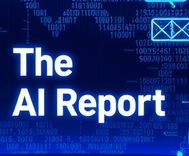Wheat Ridge Police Department using artificial intelligence to generate reports, hoping for efficiency

The AI Report
Daily AI, ML, LLM and agents news
AI in Law Enforcement: Wheat Ridge Police Embrace Smart Reporting, Sparking Debate
In an era where artificial intelligence is reshaping industries, its integration into public safety raises crucial questions and offers intriguing possibilities. The Wheat Ridge Police Department in Colorado is at the forefront of this shift, having adopted an AI-powered system to streamline the notoriously time-consuming process of generating police reports. This move, while promising significant efficiencies, also ignites a vital conversation about accountability and the role of human judgment in critical legal processes.
The Promise of Efficiency: How AI is Changing Report Generation
The core of Wheat Ridge PD's innovation lies in Axon's "Draft One" platform. Axon, a well-known provider of body-worn cameras for law enforcement agencies nationwide, has extended its capabilities to leverage the audio and video data captured by these cameras, along with GPS information. This raw data is fed into Draft One, which then rapidly produces an initial draft of a police report.
Imagine an officer completing a welfare check. Instead of spending valuable time transcribing every detail from memory or notes, the AI system takes the body camera footage and audio, instantly converting the interaction into a structured report. Details such as names, dates of birth, observations of attire, and even brief conversations are accurately captured and presented in the draft. This dramatic reduction in administrative burden allows officers to spend more time on community engagement and essential fieldwork, rather than being tied to a desk.
Ensuring Human Oversight and Accountability
Recognizing the inherent skepticism surrounding AI in such sensitive applications, the Wheat Ridge Police Department, through spokesperson Alex Rose, emphasizes a commitment to transparency and stringent human oversight. Their policy explicitly states that the AI-generated report is merely a "first draft" and not a substitute for thorough police work. Every officer is required to meticulously review, verify, and correct every word in the report before submission. The system even incorporates a clever safeguard: it deliberately inserts nonsensical sentences that officers must identify and correct, ensuring a comprehensive human review is conducted.
This "human in the loop" approach is crucial. Officers are prompted to add information that a camera cannot capture, such as smells at a scene, or their own subjective observations and context. This blend of AI speed and human intelligence aims to produce more accurate and comprehensive reports, faster than ever before.
The Other Side of the Coin: Concerns from Legal Professionals
While the efficiency gains are clear, the introduction of AI into police reporting isn't without its critics. Defense attorneys, like Anna Trobee, a senior associate attorney with Robinson & Henry P.C., voice significant concerns. Trobee highlights a potential "disconnect" when a machine contributes to the creation of a document that serves as the "backbone of a case."
Her primary worry revolves around accountability in a courtroom setting. Traditionally, an officer testifies about their direct recollections and observations, which are then reflected in their written report. With AI in the mix, Trobee fears that officers might try to deflect responsibility on the witness stand, potentially saying, "that's not exactly what happened, if you review my body worn camera..." This could lead to ambiguity regarding who is truly accountable for the report's content and its implications in a legal proceeding.
While acknowledging that AI could create opportunities for defense attorneys to "poke holes" in a prosecution's case by questioning the report's origin, Trobee's core message is a strong plea for prioritizing accuracy and human judgment above all else. When dealing with individuals' rights and lives, the integrity and precision of every word in a police report are paramount. The idea of an officer "just typing in whatever they need to" in the final moments of a shift, potentially overlooking AI-generated inaccuracies, is a risk she underscores.
Furthermore, the financial investment is notable. The program costs the Wheat Ridge Police Department $100,000 annually, representing 1% of their budget. This expenditure underscores the department's belief in the long-term benefits of this technological adoption.
Striking a Balance: Innovation Meets Ethics
The Wheat Ridge Police Department's adoption of AI for report generation illustrates a broader trend towards leveraging technology to enhance public services. While the benefits of efficiency and time-saving are undeniable, the concerns raised by legal professionals underscore the critical importance of maintaining human oversight, transparency, and uncompromised accountability. As AI continues to evolve and integrate into sensitive areas like law enforcement, the ongoing dialogue between technological innovation and ethical considerations will be vital to ensuring justice and protecting individual rights.
This pioneering approach offers valuable lessons for other departments considering similar technological leaps. The key takeaway is not just about adopting AI, but about building robust policies and practices that ensure human intelligence remains the ultimate arbiter of truth and justice.

The AI Report
Author bio: Daily AI, ML, LLM and agents news
